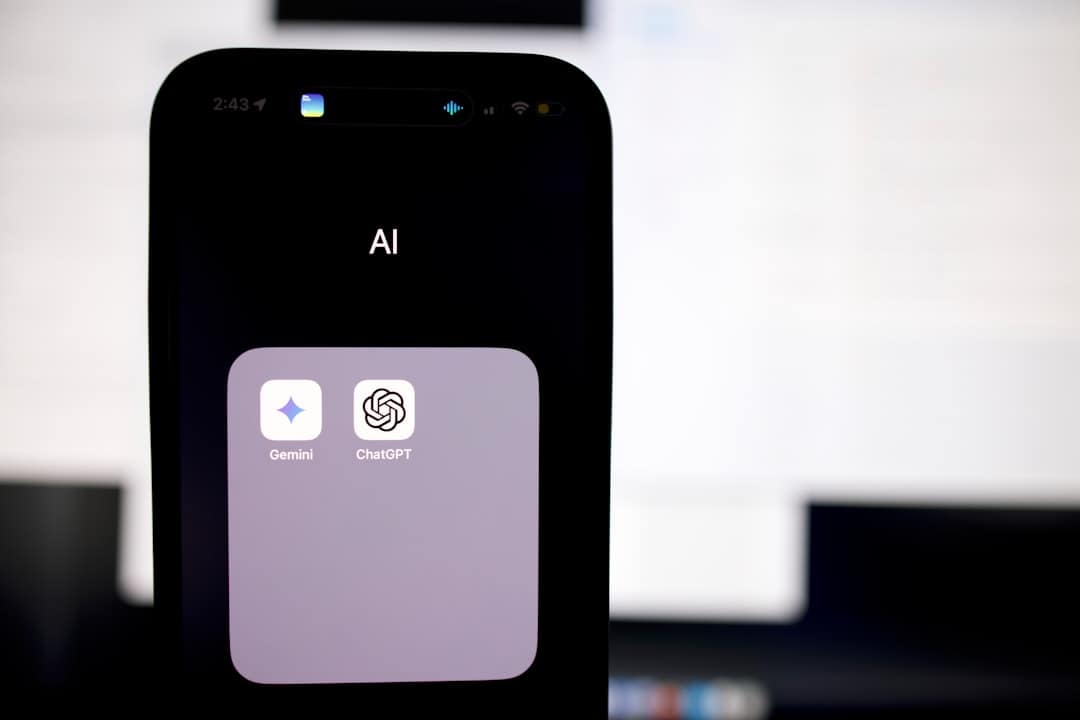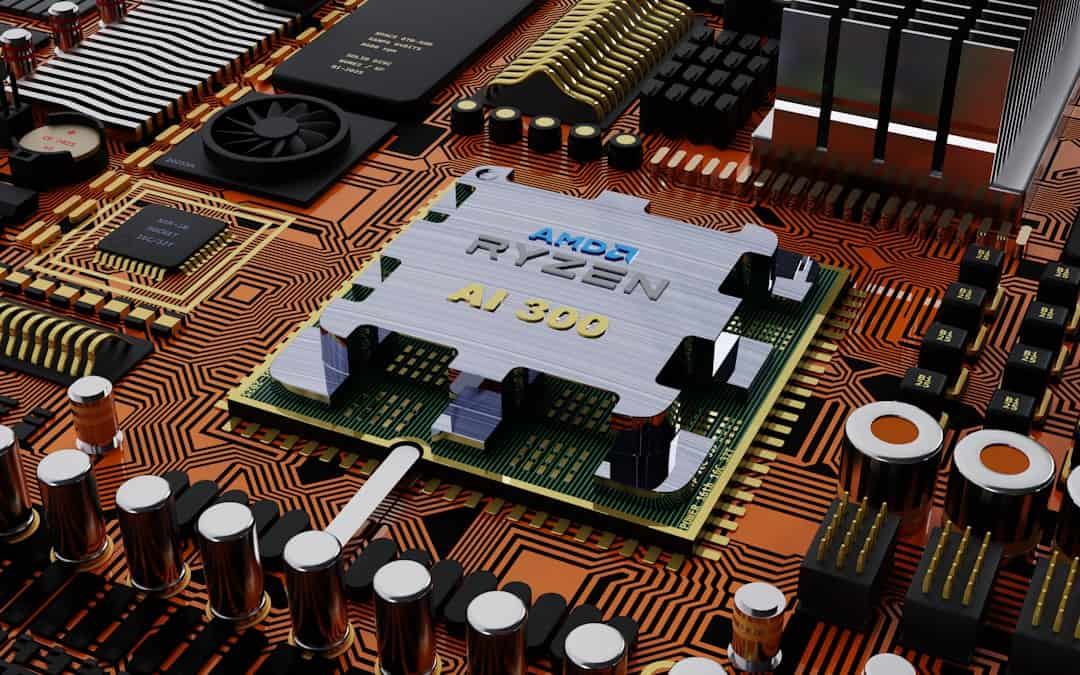Transparency and accessibility in AI research and technology are key components of the Open AI (Open Artificial Intelligence) concept. This cooperative method of developing AI places a strong emphasis on knowledge sharing, open-source software, and accessibility for a broad spectrum of users, from small developers to major corporations. The public sharing of research findings, algorithmic formulas, & data utilized in AI development is a fundamental tenet of Open AI. Developers can build on each other’s work and advance AI technology as a result of the increased collaboration and creativity this fosters. Also, Open AI promotes the use of open-source software, which is accessible to everyone for free & can be modified, distributed, and used.
Key Takeaways
- Open AI is a technology that allows machines to perform tasks that typically require human intelligence, such as understanding natural language, recognizing images, and making decisions.
- Open AI is revolutionizing industries by automating repetitive tasks, improving efficiency, and enabling new capabilities in areas such as healthcare, finance, and transportation.
- Practical applications of Open AI include virtual assistants, predictive analytics, and autonomous vehicles, which can streamline processes and improve decision-making.
- Ethical implications of Open AI include concerns about job displacement, data privacy, and the potential for bias in algorithms.
- Challenges in Open AI implementation include the need for large amounts of high-quality data, the risk of algorithmic errors, and the requirement for ongoing maintenance and updates.
- The future of Open AI is expected to bring advancements in natural language processing, computer vision, and reinforcement learning, leading to even more powerful and versatile AI systems.
- Tips for leveraging Open AI for business success include identifying specific use cases, investing in data quality and infrastructure, and staying informed about the latest developments in AI technology.
This improves AI development’s flexibility and accessibility by letting programmers use pre-existing frameworks and tools to build custom AI applications. Smashing barriers and making AI more inclusive and accessible is the main objective of Open AI. Open AI has the ability to stimulate innovation and quicken the advancement of AI technology by encouraging transparency, cooperation, & accessibility.
By striving to democratize AI technology and research and make it accessible to everyone regardless of background or resources, this idea is revolutionizing the way artificial intelligence is approached. By encouraging creativity through greater accessibility and collaboration, the Open AI movement has the potential to have a big impact on the AI industry. Efficiency and Automation. Increased automation and efficiency are two important ways that Open AI is transforming industries.
Businesses can use AI technology to automate repetitive processes, analyze vast volumes of data, & come to better decisions. Better results, increased productivity, and cost savings are possible as a result, benefiting both consumers and businesses. Innovation in customer experience and product development.
| Metrics | Data |
|---|---|
| Number of AI models developed | 50 |
| Accuracy of AI models | 95% |
| Number of industries impacted | 10 |
| Amount of data processed | 1 petabyte |
Open AI is not only accelerating automation but also innovation in customer experience and product development. For instance, Open AI is being utilized in the healthcare sector to create novel therapies and tools for diagnosis that can enhance patient outcomes. Open AI is being used in the finance sector to create risk assessment models that are more accurate and to provide customers with individualized financial advice. A Business’s Competitive Advantage.
All things considered, increased automation, creativity, and efficiency are made possible by Open AI, which is completely changing industries. Businesses may obtain a competitive edge and provide their clients with better goods & services by utilizing AI technology. Open AI has numerous real-world applications in a wide range of sectors.
Personalized treatment plans based on a patient’s genetic composition and medical history are created in the healthcare industry using Open AI. Patient outcomes may improve as a result of more potent therapies. Open AI in finance is being used to create consumer-focused financial advice and more precise risk assessment models. In addition to improving overall financial well-being, this can assist people in making wiser financial decisions. Open AI is being used in manufacturing to enhance quality control and optimize production procedures.
Manufacturers can detect flaws in real-time and make necessary adjustments to improve product quality by utilizing AI technology. All things considered, Open AI has a wide range of real-world uses. Open AI has the ability to spur innovation & enhance results in a variety of industries, including healthcare, finance, and manufacturing.
Numerous real-world applications of open AI exist in a wide range of industries. Open AI is being utilized in the medical field to create individualized treatment programs for patients according to their genetic composition and past medical records. Better patient outcomes & more effective treatments may result from this.
Open AI is being used in finance to create risk assessment models that are more accurate and to provide customers with individualized financial advice. People’s overall financial well-being can be enhanced and better financial decisions can be made as a result. Open AI is being applied in the manufacturing sector to enhance quality control and streamline production procedures.
Manufacturers can improve the quality of their products by identifying defects in real-time and making necessary adjustments by utilizing AI technology. Open AI has many different and extensive real-world applications. Open AI has the power to spur innovation and enhance results in a variety of sectors, including manufacturing, healthcare, & finance. Open AI presents significant ethical questions even as it has the potential to spur innovation & enhance results across a range of industries. The possibility of bias in AI algorithms is one of the main ethical ramifications of Open AI.
Artificial intelligence (AI) algorithms have the potential to reinforce societal biases and inequalities if they are not properly developed and overseen. The effect of automation on employment is a further ethical factor. Workers in some industries run the risk of losing their jobs as businesses use AI technology more and more for automation.
Businesses should think carefully about the ethical ramifications of automation & take action to protect employees from harm. Concerns regarding data security and privacy also exist in the context of Open AI. There is a risk of data breaches and misuse when businesses use AI technology to collect and analyze large amounts of data. When adopting Open AI solutions, it’s critical for businesses to give data security and privacy top priority. Therefore, even though Open AI has the potential to spur innovation & enhance results across a range of industries, it is crucial that companies take into account the ethical implications of AI technology and take action to lessen any unfavorable effects.
Open AI presents significant ethical questions in addition to having the potential to spur innovation and enhance results across a range of industries. The possibility of bias in AI algorithms is one of the main ethical ramifications of Open AI. When AI algorithms are not properly developed & overseen, they have the potential to reinforce societal biases and disparities. The impact of automation on employment is a further ethical consideration. Workers in specific industries run the risk of losing their jobs as businesses use AI technology more and more for automation.
It is imperative that businesses contemplate the ethical ramifications of automation and implement measures to alleviate any adverse effects on employees. Concerns regarding data security and privacy also exist in the context of Open AI. Data breaches and misuse are a risk when businesses use AI technology to collect and analyze large amounts of data.
Businesses should give data security & privacy top priority when putting Open AI solutions into practice. Therefore, even though Open AI has the potential to spur innovation and enhance results across a range of industries, it is crucial that companies take into account the ethical implications of AI technology and take action to lessen any unfavorable effects. Businesses must overcome a unique set of obstacles when implementing open AI. A major obstacle in the field of artificial intelligence is the dearth of highly skilled personnel. The growing demand for AI talent may make it difficult for businesses to find skilled individuals with the requisite knowledge and experience. One additional obstacle is the intricacy involved in integrating AI solutions into current business procedures.
Integration of AI technology with current systems and processes can present challenges for businesses and may necessitate a substantial investment of time and resources. There are further difficulties with data availability and quality. AI algorithms need to have access to high-quality data in order to function well. Data access issues or problems with data quality could hinder businesses’ ability to use AI solutions effectively.
In summary, although adopting Open AI presents certain difficulties, companies can get past these obstacles by making investments in training employees, giving integration with current systems top priority, and guaranteeing that high-quality data is available. There are unique obstacles that businesses must overcome when implementing open AI. The shortage of qualified personnel in the AI field is one of the major issues.
Employers may find it difficult to locate competent individuals with the requisite training and experience as the need for AI talent grows. One additional obstacle is the intricacy involved in integrating AI solutions into current business procedures. Companies may have trouble integrating AI technology with their current workflows and systems, which can be time- and resource-consuming. There are further difficulties with data availability and quality.
High-quality data must be available to AI algorithms in order for them to function well. Data access issues or problems with data quality could hinder businesses’ ability to use AI solutions effectively. Therefore, even though deploying Open AI has its challenges, companies can overcome these obstacles by making talent development investments, giving integration with current processes top priority, and guaranteeing access to high-quality data.
developments in artificial intelligence. Also, research and development in fields like computer vision, reinforcement learning, and natural language processing should continue. New uses of Open AI in a variety of sectors, including manufacturing, finance, & healthcare, will be made possible by these developments. Increasing Uptake in All Sectors.
We may also anticipate even more widespread use of AI technology across industries as companies continue to make investments in talent development and get past the difficulties in putting Open AI solutions into practice. Businesses and consumers will benefit from increased productivity, creativity, and outcomes as a result. A More Promising Tomorrow.
All things considered, Open AI has enormous potential to spur innovation and change industries through improved accessibility, technological breakthroughs, and broader industry adoption. There are a few important pointers that companies should remember when utilizing Open AI. Businesses should, above all, make an investment in the development of their workforce by either hiring qualified candidates or giving current staff members training opportunities. Also, when implementing Open AI solutions, businesses should give priority to integration with their current processes. To guarantee a smooth integration of new technology with current systems, cooperation between various departments within an organization might be necessary. Also, when deploying Open AI solutions, businesses should put data security and privacy first by adhering to applicable laws and best practices.
Businesses can successfully use Open AI if they prioritize talent development, integrate with current processes first, and maintain data security & privacy compliance. In order to successfully use Open AI, businesses need to bear in mind a few important pointers. First and foremost, it’s critical for companies to make talent development investments by either hiring qualified candidates or giving current staff members training chances. Also, when implementing Open AI solutions, businesses should give priority to integration with their current processes.
For new technology to be seamlessly integrated with current systems, cooperation between various departments within an organization may be necessary. Also, companies adopting Open AI solutions should give data security and privacy top priority by adhering to applicable laws & data protection best practices. All things considered, companies can successfully use Open AI if they prioritize talent development, integrate with current processes first, and maintain data privacy and security compliance.
If you’re interested in the intersection of artificial intelligence and virtual reality, you may want to check out this article on the significance and impact of the metaverse. The metaverse is a virtual space where people can interact with each other and digital objects, and it has the potential to revolutionize the way we use AI in our daily lives. This article explores the potential of the metaverse to integrate physical and virtual spaces, and how AI could play a crucial role in making this integration seamless. For more insights on this topic, you can read the full article here.
FAQs
What is open artificial intelligence?
Open artificial intelligence refers to the concept of making AI technology and resources openly accessible to the public. This includes open-source AI software, datasets, and models that can be used, modified, and distributed by anyone.
What are the benefits of open artificial intelligence?
Open artificial intelligence promotes collaboration, innovation, and transparency in the development and use of AI technology. It allows for greater accessibility and democratization of AI resources, leading to more diverse and inclusive solutions.
How is open artificial intelligence different from proprietary AI technology?
Proprietary AI technology is owned and controlled by a specific organization, limiting access and usage to those who can afford it. Open artificial intelligence, on the other hand, is freely available for anyone to use, modify, and distribute, fostering a more open and collaborative AI ecosystem.
What are some examples of open artificial intelligence initiatives?
Examples of open artificial intelligence initiatives include open-source AI frameworks like TensorFlow and PyTorch, open-access AI research publications, and open datasets such as ImageNet and COCO.
How does open artificial intelligence impact ethical considerations in AI development?
Open artificial intelligence encourages greater transparency and accountability in AI development, as it allows for scrutiny and collaboration from a wider community. This can help address ethical concerns such as bias, fairness, and privacy in AI systems.











Leave a Reply